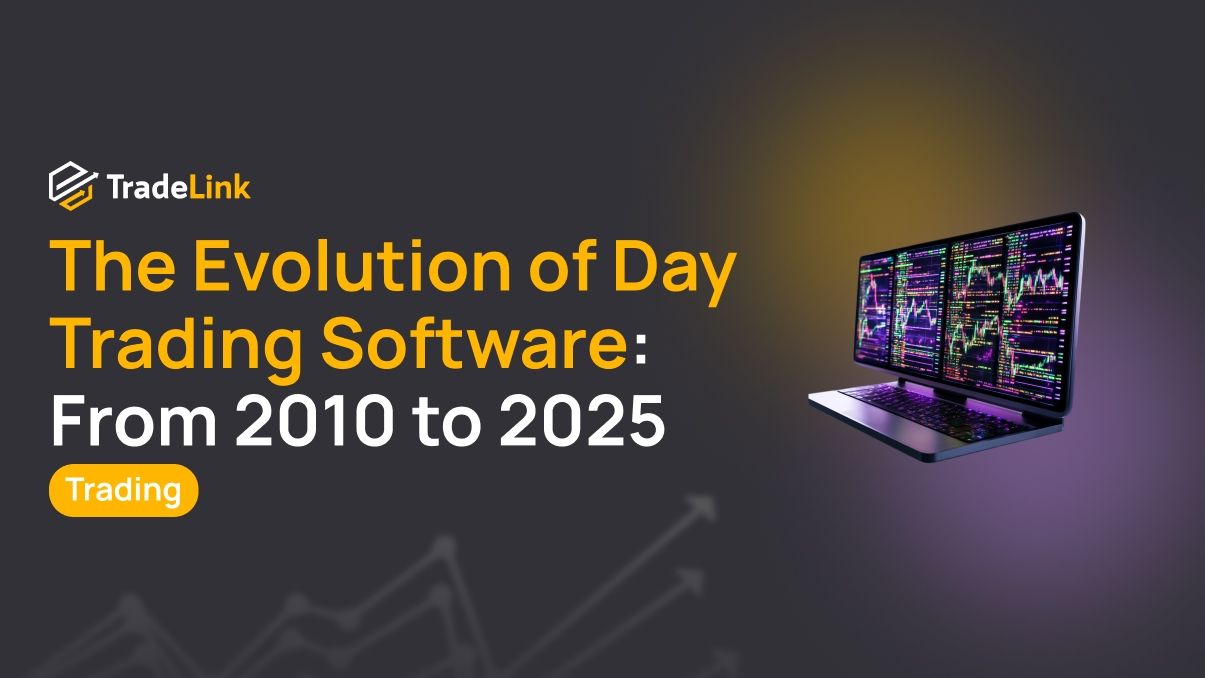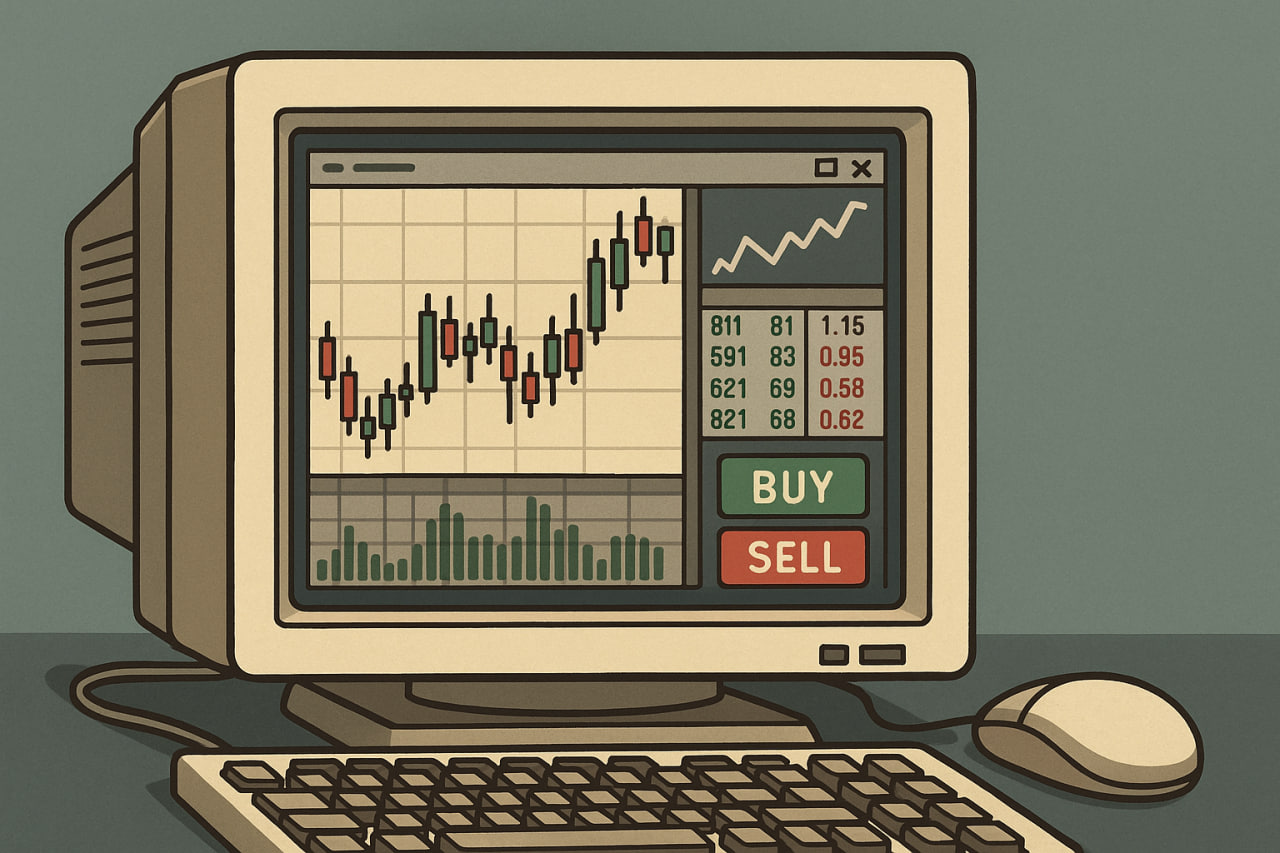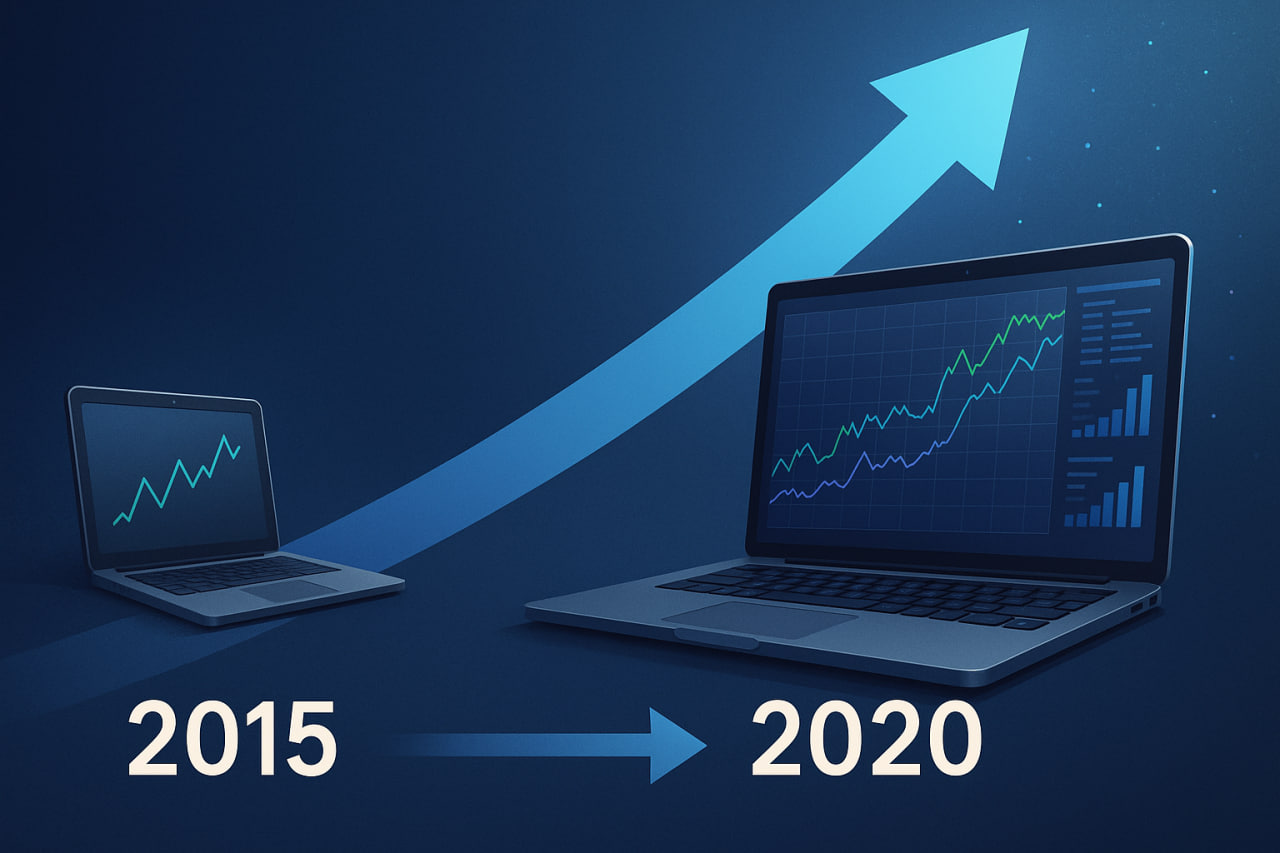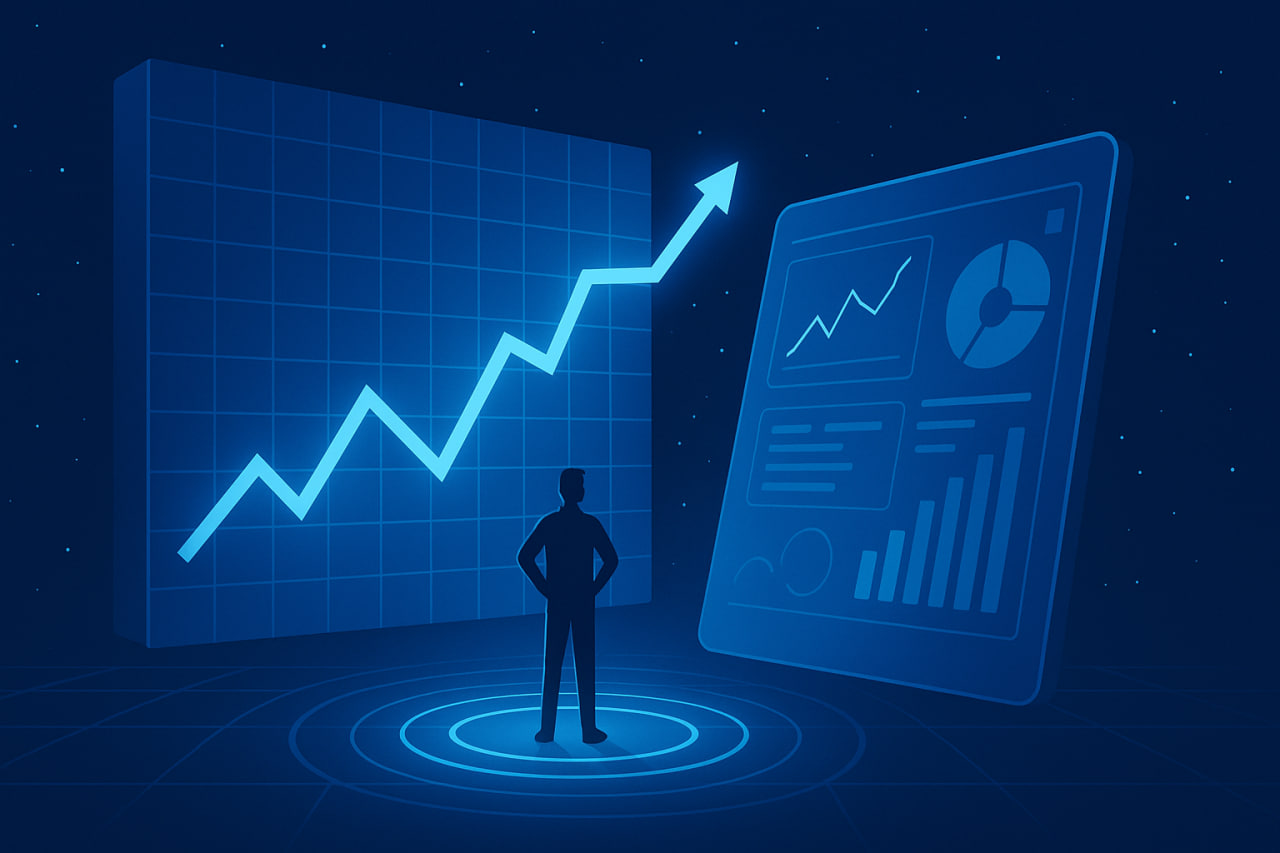The Evolution of Day Trading Software: From 2010 to 2025

Contents
- Introduction
- Day Trading Software in 2010
- Emergence of Cryptocurrency Platforms
- Technological Leap from 2015–2020
- Modern Trading Software 2020–2025
- The Future of Trading Software Beyond 2025
- Conclusion
Introduction
Over the past fifteen years, the trading software market has undergone tremendous changes. From simple desktop terminals for the stock market to integrated ecosystems with artificial intelligence and mobile applications, the evolution of day trading software has progressed rapidly. Technological advancements have directly impacted traders’ practices, expanded their toolsets, and accelerated decision-making processes in both stock and cryptocurrency markets.
Day Trading Software in 2010

Limited Features and Slow Speed
At the beginning of the decade, day trading software was far from modern standards. Traders had to settle for limited functionality and slow order execution. Analytical capabilities were also minimal: charts updated with delays, and access to market statistics was restricted.
Main shortcomings of the 2010 software:
- Limited analytical tools
- Poor integration with exchanges
- Slow trade execution speed
- Minimal data visualisation
Primarily Focused on the Stock Market
Early day trading platforms were geared toward trading stocks and forex currency pairs. Cryptocurrencies were not yet seen as a legitimate market segment. As a result, software was designed for brokerage systems and did not account for the future needs of crypto traders.
Emergence of Cryptocurrency Platforms
First Crypto Exchanges and Their Interfaces
With the rise of Bitcoin’s popularity in the early 2010s, cryptocurrency trading platforms began to emerge. Early solutions featured primitive interfaces and a limited set of functions. Traders’ capabilities were confined to basic buy-and-sell operations without in-depth analytics or advanced statistics.
Development of APIs and Automation
A turning point came with the introduction of open application programming interfaces (APIs), enabling developers to create third-party services and trading bots. This marked the beginning of the evolution of algorithmic trading programs, giving traders their first opportunities for partial trade automation.
Factors that accelerated the development of cryptocurrency platforms:
- Growing popularity of Bitcoin and altcoins
- Demand for more user-friendly interfaces
- Interest in automated trading strategies
- Emergence of specialised analytical services
Technological Leap from 2015–2020

Algorithmic Trading and the Rise of Bots
By the mid-2010s, retail traders gained access to algorithmic strategies previously used primarily by hedge funds. The evolution of trading bots and automated systems helped reduce the influence of emotions and increase trade efficiency.
Emergence of Mobile Applications
Mobile apps for day trading became a game-changer. Thanks to smartphones, traders could manage trades in real time from anywhere, leading to a rapid increase in the online trading audience.
Key achievements of the 2015–2020 period:
- Expanded access to algorithmic trading
- Development of mobile applications
- Improved interfaces and usability
- Integration of multi-asset solutions (stocks, forex, cryptocurrencies)
Modern Trading Software 2020–2025

Real-Time Analytics and User-Friendly Dashboards
Modern platforms emphasise real-time analytics. Traders work with flexible dashboards that allow tracking key metrics, visualising market data, and using indicators without delays.
Artificial Intelligence and Machine Learning
Artificial intelligence and automation in trading software have become commonplace. Platforms incorporate machine learning algorithms for scenario forecasting and strategy personalisation. These tools make analysis more precise and help reduce risks.
Integration with Crypto Exchanges
Modern trading platforms for stocks and cryptocurrencies support multi-asset operations. This simplifies access to digital currencies and integrates cryptocurrency trading into a unified ecosystem.
Comparison of trading platforms in 2010 and 2025:
| Characteristic | 2010 | 2025 |
|---|---|---|
| Execution Speed | Seconds with delays | Milliseconds, lag-free |
| Available Assets | Stocks, forex | Stocks, forex, cryptocurrencies |
| Analytical Tools | Basic charts | Real-time analytics, AI |
| Mobility | Limited | Full-featured mobile apps |
| Automation | Minimal | Algorithmic trading and bots |
The Future of Trading Software Beyond 2025

The next stage of development may involve even deeper integration of artificial intelligence and blockchain technologies. It’s likely that trading systems will become almost fully automated, with humans focusing on oversight and strategy development. Special attention may be given to data security and the integration of decentralised solutions.
Possible directions for future development:
- Widespread use of blockchain for transaction transparency
- Creation of personalised AI assistants for traders
- Development of multi-platform solutions with unified access to various markets
- Strengthening the role of decentralised applications (dApps) in trading
Conclusion
The history of day trading software vividly illustrates how technology can transform the essence of financial markets. From tools with minimal functionality to intelligent ecosystems integrating stock and cryptocurrency segments, the journey has been swift. The future opens new horizons where traders will interact with automated systems, and the quality of software will become a critical competitive advantage.